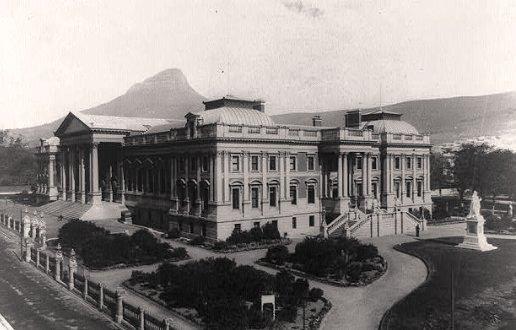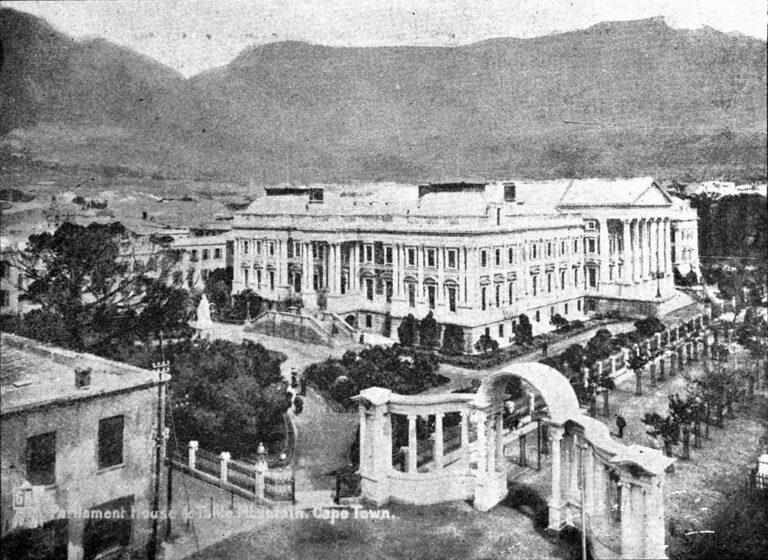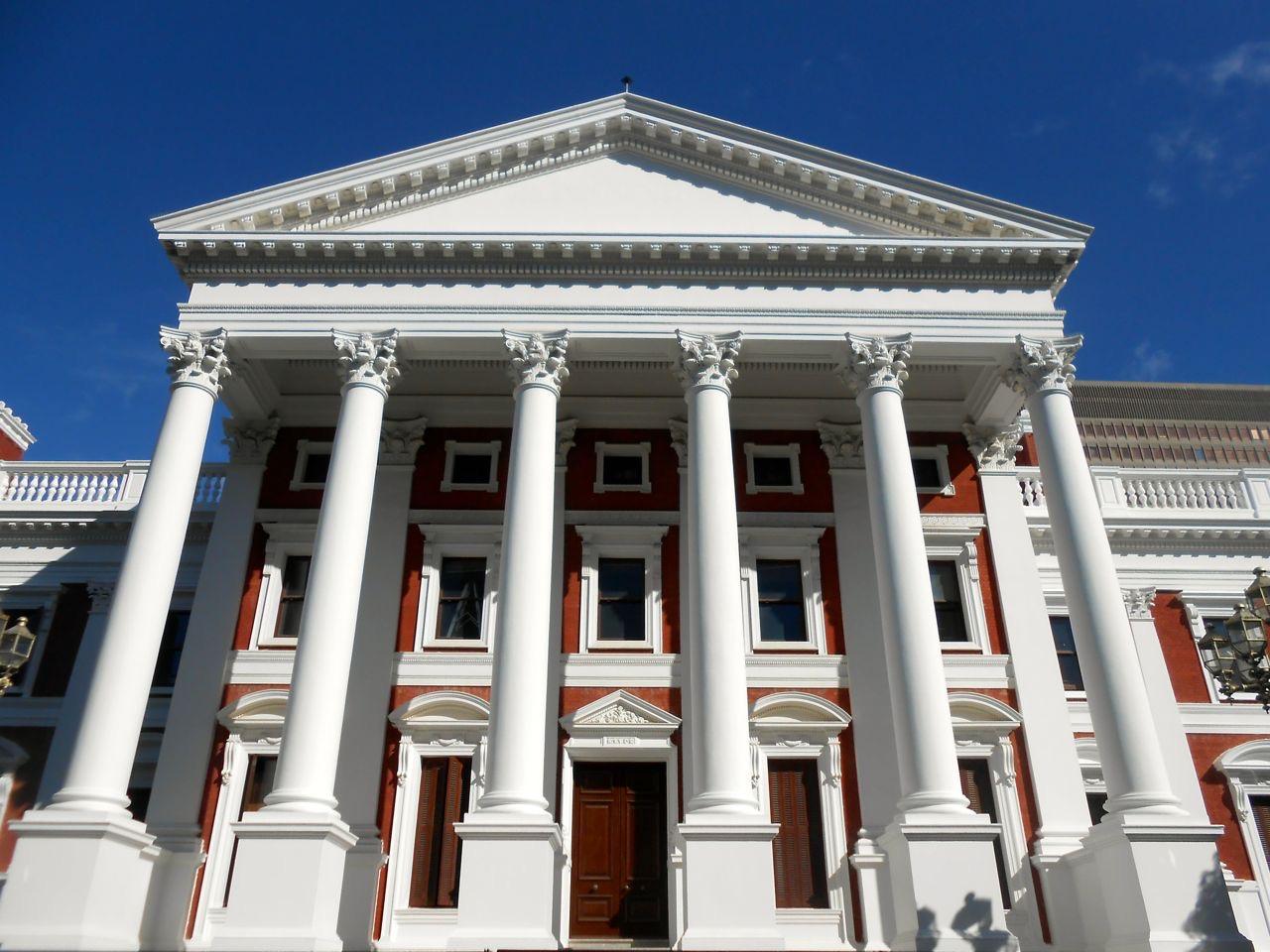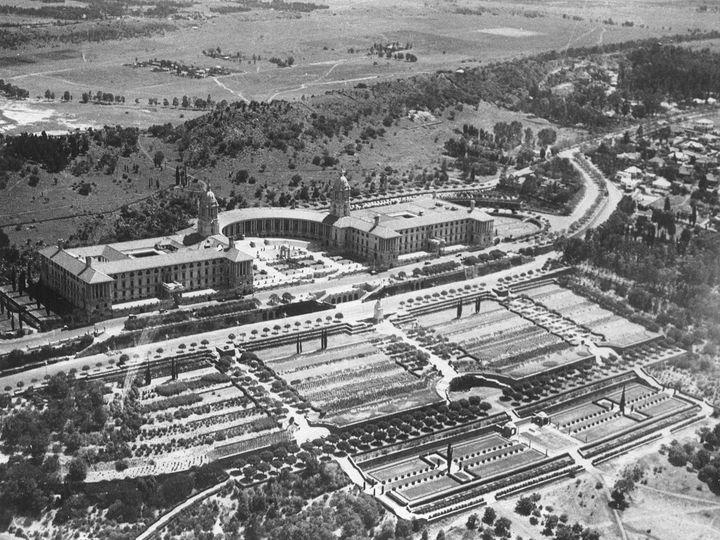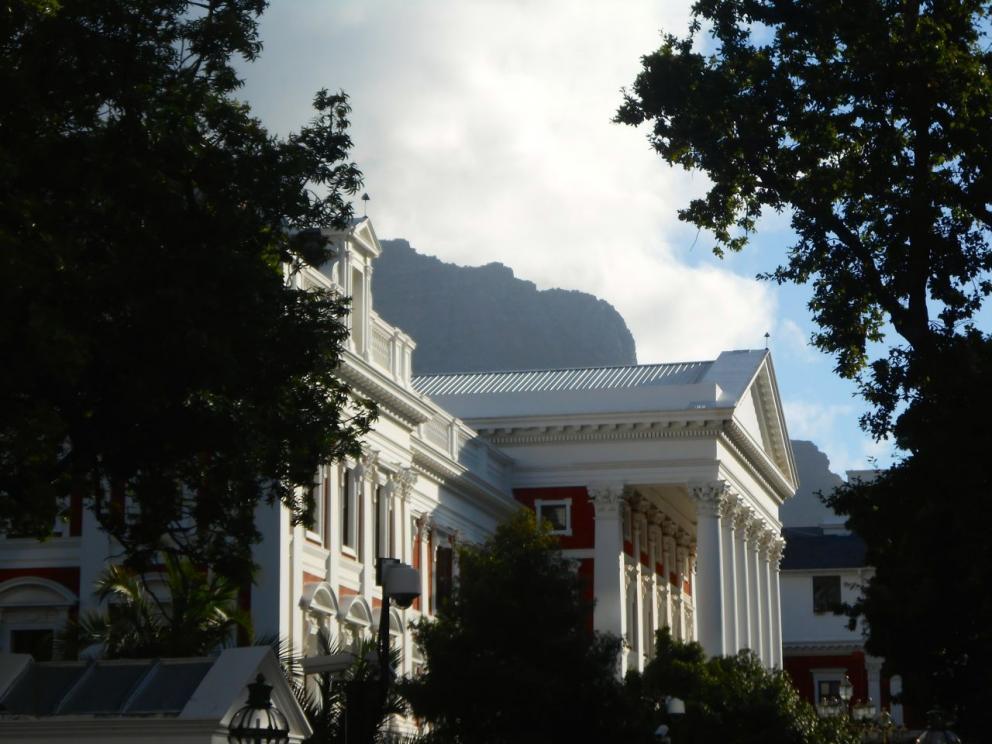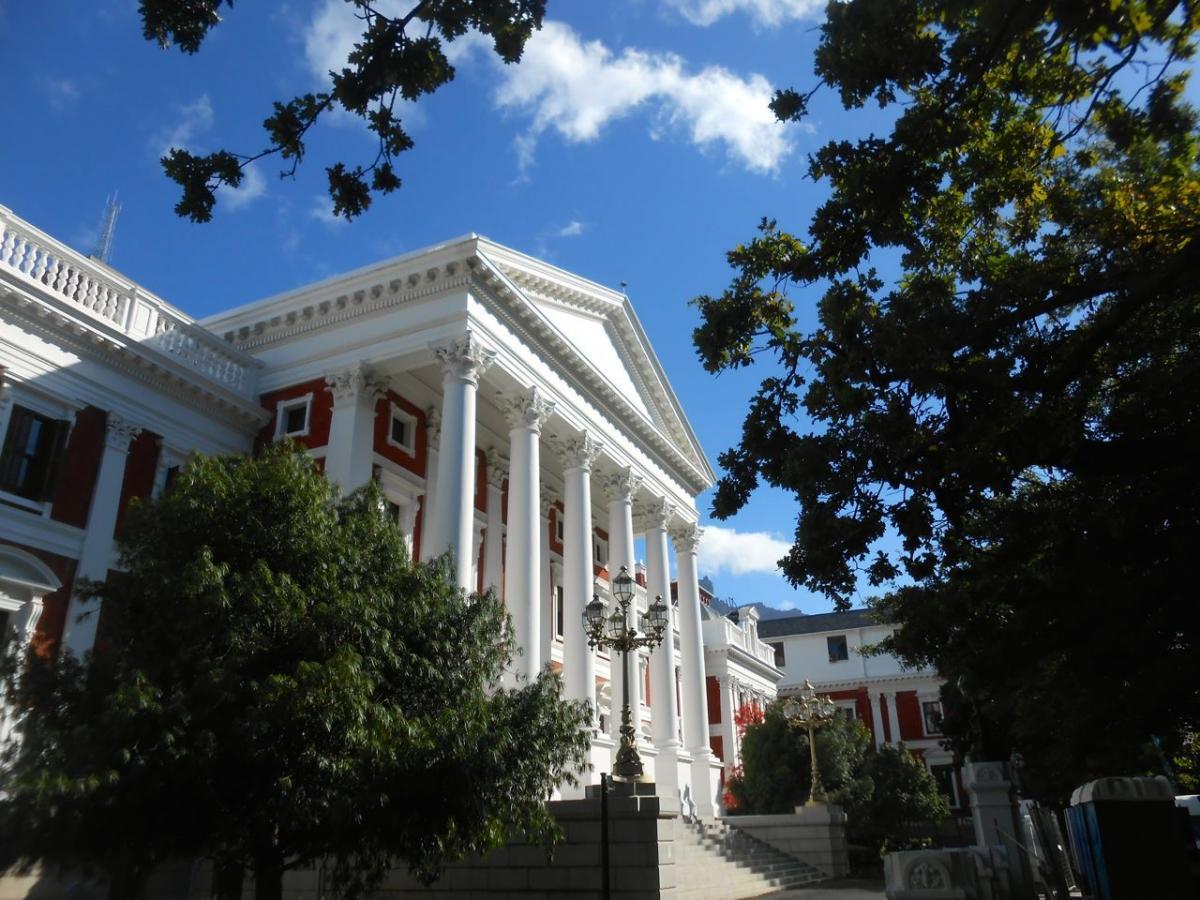
Disclaimer: Any views expressed by individuals and organisations are their own and do not in any way represent the views of The Heritage Portal. If you find any mistakes or historical inaccuracies, please contact the editor.
It is with shock, disbelief and sadness that the Heritage Association of South Africa learned of the fire that engulfed the Houses of Parliament in Cape Town on 2nd January.
The damage is a tragic and devastating loss for all South Africans. We mourn with all South Africans. A building of this stature lives through and for its past, its present and its future.
This heritage building came into its own after 1994. As the legislative capital of the country, Parliament represents the essence of democracy.
It was declared a National Heritage Site by the South African Heritage Resources Agency (SAHRA) and given a Grade 1 national status – the highest grade possible. It is a neo-classical building and compares to the official dominion buildings that evolved in Canada and Australia.
The building is filled with treasures of the past of all South Africa’s communities.
Old photos of the Parliament Buildings
In recent years great effort has been expended on ensuring that the building in all its dimensions speaks for all South Africans. Our Parliament is the custodian of our identity.
We do not as yet know the extent of the damage, we are concerned for the historic fabric of the building and its architecture, but also for the fine and important copyright Library of the Houses of Parliament, the Art collection which holds an important photographic collection. We are also concerned about the fate of the Keiskama Hoek Tapestry.
Colonial history was simply one layer in the history of parliamentary progress. It is a building that dates back to the 19th century. The oldest section, which today houses the National Council of Provinces dates back to 1885.
From the start, the building was meant to be august, grand and noble and signal the achievement of local responsible government for the Cape. It was here that Cape liberalism was nurtured by men who let the British Government know that the Cape was not simply a colonial outpost. Men such as John X Merriman (Cape Prime Minister between 1908-1910) and William P Schreiner (1898–1900) come to mind. The Cape Parliament followed the Westminster model of two houses, a Cape Legislative assembly (or Lower house) and a Cape Legislative Council (the equivalent of an Upper house).
A grand facade (The Heritage Portal)
The original design architect was Charles Freeman (1833 – 1911), a Cape Town architect who at that time was employed by the Department of Public Works. Freeman was dismissed as resident architect.
A young new architect, Henry Greaves (1840 – 1901) took over the project. The building took ten years to complete and cost five times the original estimate, costing £220 000. There have been alterations, additions and renovations through the years to ensure that the building remains fit for purpose as Parliament itself evolved.
After 1910 following the creation of the Union of South Africa, the Cape Parliament ceased to exist and the building became the national Parliament building, first for the Union between 1910 and 1961 and thereafter for the Republic of South Africa with chambers for the Senate and the House of Assembly. In 1984, the Senate was abolished and the short-lived tri-cameral model was introduced.
With the democratic revolution of 1994, South Africa retained the three capital structure, with laws made in Cape Town in the Houses of Parliament, laws executed in Pretoria at the Union Buildings and a judicial framework that is now split between Bloemfontein and Johannesburg.
Union Buildings from above
In 1994, the Houses of Parliament was adapted for a new constitution and a new democratic South Africa, with a National Council of Provinces established in 1997 equating to the old Senate.
The Houses of Parliament comprise three main sections – the original 1885 building and further additions in the 1920s and 1980s. There were extensive renovations to Parliament and the old Chamber of the Cape Legislative assembly.
HASA urges the South African government to show far stronger respect for all heritage buildings of which the Parliament of South Africa together with the Union Buildings in Pretoria are pre-eminent. Heritage buildings and their treasures within need protection and demand the greatest care. They are irreplaceable.
Action must be taken to determine the cause of the fire; if there has been arson, it is a treasonable crime. Resources must be found to restore, recover and preserve all that has survived. We urge the digitization of all historical documents.
We send wishes of support to President Cyril Ramaphosa, the Cape Premier and the Cape Town Mayor. At a time of crisis such as this, great courage and an unconquerable spirit must be shown by leadership. We shall judge you by your defence of Heritage.
Another view of Parliament (The Heritage Portal)
Kathy Munro is an Honorary Associate Professor in the School of Architecture and Planning at the University of the Witwatersrand. She enjoyed a long career as an academic and in management at Wits University. She trained as an economic historian. She is an enthusiastic book person and has built her own somewhat eclectic book collection over 40 years. Her interests cover Africana, Johannesburg history, history, art history, travel, business and banking histories. She researches and writes on historical architecture and heritage matters. She is a member of the Board of the Johannesburg Heritage Foundation and is a docent at the Wits Arts Museum. She is currently working on a couple of projects on Johannesburg architects and is researching South African architects, war cemeteries and memorials. Kathy is a member of the online book community the Library thing and recommends this cataloging website and worldwide network as a book lover's haven. She is also the Chairperson of HASA.
Comments will load below. If for any reason none appear click here for some troubleshooting tips. If you would like to post a comment and need instructions click here.

